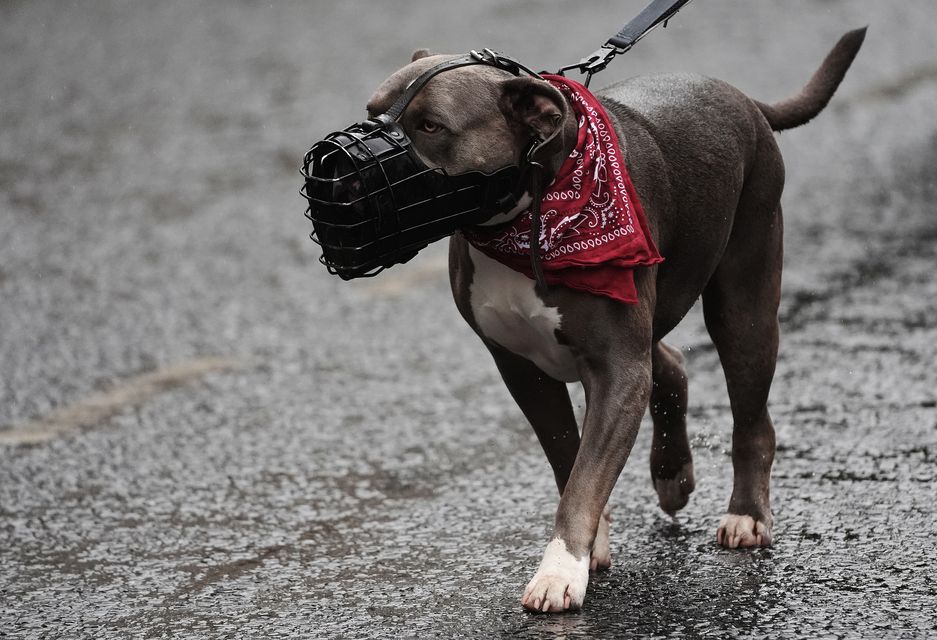More than 100 dangerous dogs have been destroyed a month on average since XL bullies were banned, as the cost of kennelling seized dogs is expected to reach £25 million by the end of the financial year, according to reports.
In the first eight months of 2024, 1,991 suspected banned dogs had been seized, up from 283 in 2023, and 818 dogs had been destroyed, more than double 2023’s figure, the BBC has reported following Freedom of Information Act (FOI) responses from 19 police forces in England and Wales.
Since February, it has been a criminal offence to own an XL bully dog in England and Wales without an exemption certificate, meaning unregistered pets will be taken and owners possibly fined and prosecuted.
As well as the XL bully, other banned types of dog include the pit bull terrier, Japanese Tosa, dogo Argentino and fila Brasileiro.
Superintendent Patrick O’Hara, of the National Police Chiefs’ Council’s (NPCC) dangerous dogs portfolio, said: “The cost of kennelling and veterinary bills alone currently stands in excess of £11 million and is expected to total over £25 million by the end of the financial year.”
He said the new legislation “has placed huge additional demand on our resources”.
Before the XL bully ban was introduced, there were 120 dog liaison officers across England and Wales but more than an additional 100 officers and staff have been redeployed from other areas to support the dangerous dog response, Mr O’Hara added.
He said: “We have not yet received any additional funding to support us in dealing with this additional demand which we predict will continue to rise since the government brought in the ban on XL bullies.
An XL bully. (Brian Lawless/PA)
“We will always uphold legislation and act robustly to keep our communities safe from threats, of which dangerous dogs continue to present a significant one. Alongside this, we are working hard to encourage responsible ownership, ensuring people are aware of the types of dogs they are bringing into their homes and what is involved in taking on a dog of any breed.”
Initial projections were that there could be as many as 10,000 XL bullies in the UK, but by the time the database closed for registration this stood at more than 55,000 dogs, the NPCC said.
The BBC has reported that the chiefs of the 43 police forces in England and Wales want a change in the law to give officers alternative ways of dealing with people found in possession of dangerous dogs, including being able to caution responsible owners who may have unwittingly bought an XL bully, while still having strong powers to clamp down on illegal breeders and persistent offenders.
Of the 25 forces that replied to BBC’s FOI requests, 22 said they were on course to see more reported incidents this year.
And more than half of the police forces that responded about their kennels said they were full or near capacity.
A Government spokesperson said: “The ban on XL bullies is an important measure to protect public safety, and we expect all XL bully owners to comply with the strict conditions.
“We continue to work with the police, local authorities and animal welfare groups to prevent dog attacks by encouraging responsible dog ownership across all breeds of dog, addressing dog control issues before they escalate and using the full force of the law where needed.”
This week a High Court judge said the Government had “sufficient evidence of an alarmingly high level of fatal attacks by XL bullies” to justify concerns, after a challenge over the ban on the breed.
XL bully owner Sophie Coulthard and campaign group Don’t Ban Me, Licence Me took legal action against the Department for Environment and Rural Affairs (Defra) over the large bulldog-type American breed being added to a banned list under the Dangerous Dogs Act.
Campaigners argued that the ban is unlawful, claiming it was based on “unreliable” material, lacked a “proper” analysis over its impact and includes “vague” standards that risked people unknowingly committing a criminal offence.
In a judgment on Tuesday, Mrs Justice Lang dismissed most of the legal challenge over the ban and said that issues, including defining the right types of dog and the human impacts of euthanasia, were considered by Defra.
